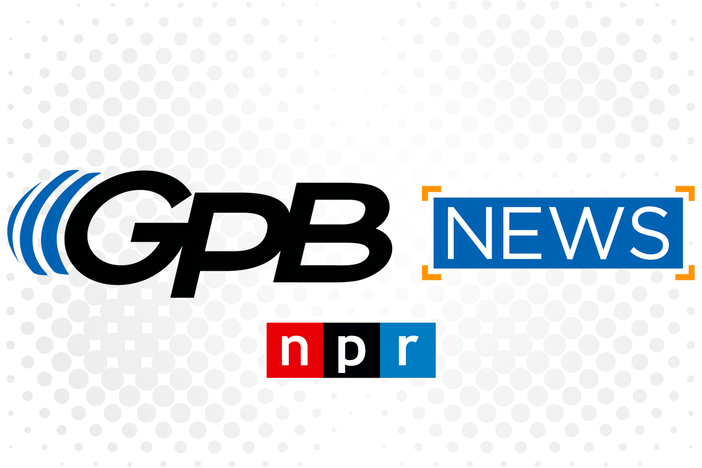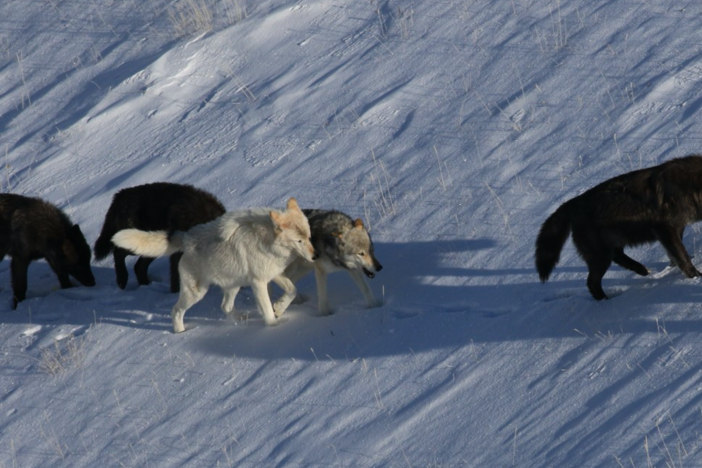Section Branding
Header Content
A Dead Wild Male Ocelot May Still Have Offspring, If Scientists' Efforts Succeed
Primary Content
South Texas is the one place in the U.S. where ocelots breed in the wild. After the death of a male, scientists tried something novel: artificial insemination from a wild ocelot into one at a zoo.
Transcript
LEILA FADEL, HOST:
The United States' last breeding population of wild ocelots lives in South Texas. In late July, a team of researchers participated in a race against time. They're trying to increase the biological diversity of the mid-size cats. Texas Public Radio's Dominic Anthony Walsh reports they'll know if the effort paid off later this week.
DOMINIC ANTHONY WALSH, BYLINE: Ocelots are very particular about the places they hang out.
HILARY SWARTS: They're really, really loyal to this one habitat type, and you don't really find them anywhere else.
WALSH: Hilary Swarts is a wildlife biologist with the U.S. Fish and Wildlife Service. She's based at the Laguna Atascosa Wildlife Refuge in South Texas.
SWARTS: Sometimes getting from one habitat patch to another requires crossing a road, and vehicle mortalities are the largest source of known mortality for ocelots.
WALSH: The habitat fragmentation has contributed to declining genetic diversity, making the population more vulnerable to disease. Researchers have installed protected wildlife crossings under roads to make it safer for ocelots to move between areas. But it's not always enough.
SWARTS: We had a male - OM 283 (ph) - lovely boy. He was about 9 years old. He had been using those underpasses for nearly a year - safely, effectively. It was like, this guy's got it. And then he went on a different road and unfortunately got hit by a car.
WALSH: But the legacy of OM 283 might live on.
THOMAS DEMAAR: So the day began with Dr. Hilary Swarts calling me. Actually, she called me during the night...
WALSH: That's Thomas deMaar, senior veterinarian at Gladys Porter Zoo in Brownsville.
DEMAAR: ...To tell me that she had report of a recently dead ocelot, that she was going to pick it up, and she was going to put it in - on ice and bring it in first thing in the morning, that we would try to collect the testes for the goal of collecting reproductive material.
WALSH: That's right. OM 283 became a sperm donor from beyond the grave.
DEMAAR: We have found that if the gonads are collected soon after death, you can actually retrieve either sperm or eggs, and they can be used at a later date.
WALSH: Artificial insemination is not a simple process. Even extracting the sperm from the testicles isn't easy. So the team overnighted the testes of OM 283 from South Texas to Ohio to Bill Swanson at the Cincinnati Zoo.
BILL SWANSON: We received the sample here, again, 36 hours after the cat was hit by the car. That was extraordinary.
WALSH: Swanson is with the zoo's Center for Conservation and Research of Endangered Wildlife.
SWANSON: So I collected the sperm. I got 250 million sperm, which was a lot.
WALSH: Some of the sperm has already been used on a cat at the Albuquerque Bio Park in New Mexico.
SWANSON: Her name was Lucy. She had eight ovulations on her ovaries, which is a pretty large number for an ocelot. So that was very promising.
WALSH: Swanson says the techniques and procedures used in this attempt, the first of its kind, could help researchers do something similar in the wild, and that could be one way to address the genetic diversity problem in the wild ocelot population.
SWANSON: Ocelots as a species are not going to be going extinct anytime soon. But we may lose the population we have in the United States, and I don't want to see that happen.
WALSH: Researchers will have a good idea of whether Lucy is pregnant later this week. Even if this try didn't work, OM 283 gave them enough material for about nine more attempts. For NPR News, I'm Dominic Anthony Walsh at the Laguna Atascosa National Wildlife Refuge.
(SOUNDBITE OF MUSIC) Transcript provided by NPR, Copyright NPR.
Bottom Content



